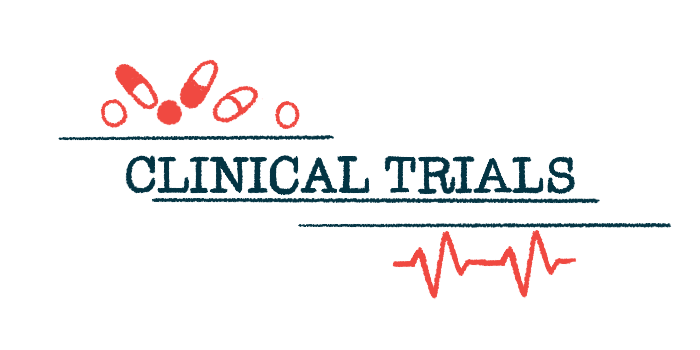Vitamin D at high dose doesn’t lower MS relapse risk, Phase 3 trial finds
Disease activity similar with 5,000 or 600 IU of vitamin daily plus Copaxone

A high-dose vitamin D supplement did not reduce the risk of relapses in people with relapsing-remitting multiple sclerosis (RRMS) already using a disease-modifying therapy to control disease activity, according to findings of a Phase 3 clinical trial.
The VIDAMS study (NCT01490502) — standing for Vitamin D to Ameliorate Multiple Sclerosis — compared high- and low-dose supplements as an add-on to Copaxone (glatiramer acetate) in adults with RRMS.
Vitamin D at high dose also failed to prevent the formation of new lesions and to delay disease worsening, initial trial data, released at the Americas Committee for Treatment and Research in Multiple Sclerosis (ACTRIMS) Forum in February, reported.
Vitamin thought helpful for MS patients, but extent of benefits unknown
Full trial findings now are in the study, “High-dose vitamin D3 supplementation in relapsing-remitting multiple sclerosis: a randomised clinical trial,” published in eClinicalMedicine. The work was funded by the National MS Society.
“These results suggest that prescribing higher doses of vitamin D for purposes of modifying the RRMS course may not be beneficial,” its researchers wrote.
Vitamin D is a nutrient mostly known for its role in calcium and phosphorus absorption to keep bones and teeth healthy. But it has many other important roles in the body, such as providing support to the brain and muscles, and keeping the immune system in check.
The vitamin is made naturally in the skin through exposure to sunlight. Most people with multiple sclerosis don’t make enough vitamin D from sunlight, however, and need to get it from supplements.
People with higher blood levels of vitamin D in their youth are reported to be at a lower risk of MS later in life. Vitamin D also is thought to offer some benefit to patients, such as a better quality of life, but its impact on disease activity is less clear.
“Three randomised clinical trials of vitamin D supplementation did not demonstrate an apparent benefit but also were limited in duration or size,” the researchers wrote.
VIDAMS, a Johns Hopkins University-sponsored trial, was designed to determine if two years of high-dose vitamin D supplementation might lessen RRMS disease activity. The study included 172 patients in the U.S., diagnosed less than 10 years before enrollment. All started with injections of Copaxone (20 mg daily) 30 days before beginning with the vitamin.
Participants were randomly assigned to vitamin D supplements daily at either a high dose (5,000 international units, or IU) or a low dose (600 IU; the typical recommended amount) for 96 weeks (about two years) while continuing on Copaxone.
Among enrolled men, a larger proportion received high-dose than low-dose vitamin D (31% vs. 16%), while a lower proportion of the study’s 29 Black patients were randomized to high-dose vitamin D than low dose (12% vs. 22%). Women were somewhat equally represented in these two groups, with 84% assigned to a high-dose and 69% to a low-dose supplement.
Mean ages were similar in both dosing groups, 34.5 vs. 34.2.
Upon entering the trial, average vitamin D blood levels in each group were less than 30 nanograms/mL (ng/mL), which are considered insufficient under Endocrine Society guidelines. They set at “ideal” levels at 40 to 60 ng/mL.
Over the trial, average vitamin D blood levels in the low dose group remained fairly stable, reaching a mean of 30.3 ng/mL at two years of treatment. High-dose patients showed significant increases starting at six months of the add-on supplement, with mean blood levels of 52.5 ng/ml. Higher levels were sustained through the trial’s two years, when patients’ mean levels were 54 ng/mL.
Still, the trial failed to met its main goal of showing that high-dose vitamin D could lower relapse rates in RRMS patients. Over the trial’s duration, relapses occurred in 34% of those in the high-dose group and 32% of those in the low-dose group.
“At 96 weeks, the cumulative proportion of participants with confirmed relapse did not differ between … groups,” the researchers wrote.
Secondary trial goals also not met with high-dose supplement
Secondary study goals also were not met. No differences were evident in the number of new or enlarging lesions or of active inflammatory lesions on MRI scans between the groups. People in both groups also experienced similar changes in brain volume, lesion load, vision acuity, and disease severity.
When statistical analyses took into account a change in MS treatment, adherence to Copaxone, early withdrawal from the study, and changes in blood vitamin D levels, similar results were obtained.
Supplement use appeared to be generally safe, the researchers noted, with no reports of hypercalcemia (higher-than-normal calcium levels). Three patients developed kidney or urinary stones; in two, this was likely related to the vitamin D supplement they were taking.
“Although common practice, based on these findings, prescribing [high-dose vitamin D] for the purpose of reducing clinical and imaging disease activity in established RRMS does not appear to be helpful,” the researchers concluding, adding that the higher dose also led to “expected differential changes” in blood vitamin D levels.
They noted that even higher vitamin D levels may be needed to see an effect, and that a response to vitamin D supplementation might be evident only within patient subgroups.
“Future research includes a planned meta-analysis using individual patient-level data from [completed vitamin D trials] to increase sample size and statistical power and further explore these questions,” the scientists added.







